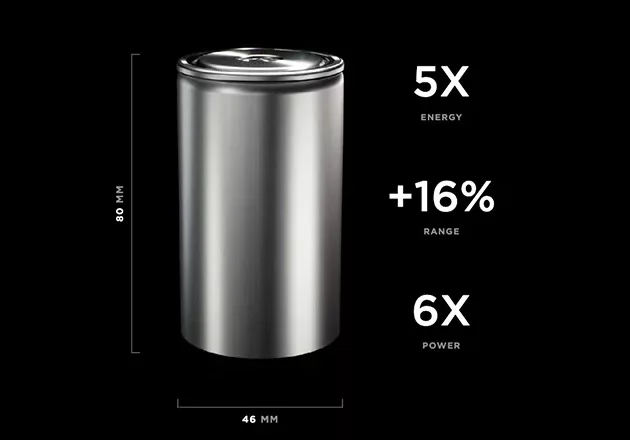
What is cobalt and why is it used in batteries?
Cobalt is crucial for making batteries, especially in electric vehicles like those from Tesla. It boosts battery performance, allowing for greater energy storage and durability. Yet, concerns arise from unethical mining practices and environmental issues in countries where cobalt is sourced.
- Cobalt’s Role in Batteries:
- Enhanced Performance: Cobalt in lithium-ion batteries elevates their efficiency, delivering more power and stability over time.
- Structural Stability: It helps uphold the battery’s structure, preventing degradation.
- Ethical Concerns in Cobalt Mining:
- Global Production: Majority of cobalt comes from regions like Congo with reported unethical mining practices and human rights violations.
- Tesla’s Response: Tesla aims to lessen cobalt use by adopting nickel-rich cathodes, considering the impact on the environment and affected communities.
- Challenges and Solutions:
- Trade-offs in Alternatives: Cobalt-free options have trade-offs like lower energy density or stability.
- Balancing Act: Striking a balance between performance and sustainability poses ongoing challenges for companies like Tesla.
- Future Prospects:
- Continued Innovation: While eliminating cobalt entirely remains a challenge, ongoing research in the automotive industry offers hope for future advancements in battery technology.
- Towards Sustainability: The pursuit of greener solutions remains a priority for Tesla and the industry at large.
By focusing on cobalt’s significance, ethical concerns, challenges in alternative options, and future prospects, it becomes clearer how Tesla and the industry are navigating towards more sustainable battery solutions.
The negative impact of cobalt mining on the environment and human rights
Cobalt mining’s impact on the environment and human rights is severe. The extraction process damages landscapes, pollutes air and water with toxins, and endangers nearby communities and wildlife.
- Environmental Impact:
- Devastating Extraction: Vast open-pit mines scar landscapes and harm ecosystems.
- Toxic Pollution: Chemicals released into air and water harm communities and wildlife.
- Human Rights Concerns:
- Unsafe Conditions: Weak regulations lead to dangerous work environments for miners.
- Child Labor: Reports suggest up to 20% of cobalt production involves child labor.
- Workforce Exploitation:
- Grueling Conditions: Workers endure long hours, meager pay, and health hazards without adequate protection.
- Forced Labor Allegations: Many workers face forced labor situations.
- Community Impact:
- Livelihood Disruption: Land displacement disrupts traditional ways of life and livelihoods.
- Lack of Benefits: Communities often see little benefit from the wealth generated due to corruption and lack of transparency.
The grave consequences of cobalt mining on the environment, human rights, and local communities emphasize the urgent need for sustainable alternatives in industries like Tesla’s to reduce or eliminate reliance on this problematic resource.
Tesla’s commitment to sustainability and reducing the use of cobalt
Tesla stands out in the automotive industry for its sustainability focus, particularly in reducing cobalt use due to environmental and ethical concerns related to its mining.
- Tesla’s Sustainability Commitment:
- Recognizing Concerns: Tesla acknowledges the environmental and ethical issues linked to cobalt mining.
- Consequences of Cobalt Mining: Mining involves hazards like dangerous conditions, child labor, and ecosystem damage.
- Exploration of Alternatives:
- R&D for Cobalt-Free Batteries: Tesla actively researches alternative battery chemistries to reduce or eliminate cobalt.
- Performance Challenges: Matching cobalt’s stability and energy density poses a significant hurdle for viable alternatives.
- Partnerships and Responsible Sourcing:
- Supplier Collaboration: Tesla partners with responsible suppliers for cobalt and focuses on a sustainable supply chain.
- Focus on Sustainability: Beyond vehicles, Tesla aims for a sustainable ecosystem for employees, suppliers, and customers.
Tesla’s commitment to reducing cobalt usage involves ongoing research and partnerships to overcome challenges, aiming for a more sustainable and ethical future in their operations.
Alternatives to cobalt in batteries
Challenges and limitations of eliminating cobalt from Tesla batteries
Eliminating cobalt from Tesla batteries is challenging due to the need for alternatives that match cobalt’s performance, scalability issues, and ethical sourcing concerns.
- Performance Match: Finding alternatives like nickel or manganese that replicate cobalt’s role in enhancing battery energy density and performance remains a challenge.
- Battery Efficiency: Cobalt significantly contributes to longer ranges and overall battery efficiency, which alternatives haven’t fully achieved.
- Availability and Scalability:
- Supply Chain Constraints: Alternative materials may face availability issues or require extensive development to scale up for mass production.
- Resource Dependency: Swiftly transitioning from cobalt could lead to overreliance on another limited resource, posing risks.
- Ethical Sourcing:
- Mining Practices: Ensuring responsible sourcing for new materials remains challenging despite industry efforts.
- Transparency Concerns: Fully guaranteeing ethical sourcing while exploring alternatives poses ongoing challenges.
Tesla’s focus on research and development aims to reduce cobalt reliance while acknowledging the hurdles posed by its unique properties and limited alternative options. Their commitment to sustainability drives ongoing innovation to address these challenges without compromising battery quality.
The future of battery technology in the automotive industry
The automotive industry’s battery technology is evolving rapidly, offering promising advancements for electric vehicles (EVs) and sustainable transportation.
- Solid-State Batteries:
- Improved Design: Solid-state batteries with solid electrolytes promise better safety, higher energy density, faster charging, and longer lifespan compared to traditional lithium-ion batteries.
- Alternative Battery Materials:
- Reduced Reliance on Cobalt: Exploration of materials like LFP, NMC, and LTO offers enhanced performance while decreasing reliance on cobalt.
- Performance Enhancement: These alternatives not only diversify materials but also offer improved performance traits.
- Technological Advancements:
- Nanotechnology: Nanostructured materials and graphene-based additives show potential for enhancing electrode conductivity, reducing resistance, and increasing energy storage capacity.
- Infrastructure Development: Expanding charging networks globally is crucial to support EV adoption, reducing range anxiety, and promoting widespread use.
The collaborative efforts in research and development across industries are driving innovation. Anticipated breakthroughs in battery technology aim to make EVs more practical and attractive, merging renewable energy with advanced batteries for sustainable transportation solutions. This trajectory toward cleaner air, reduced emissions, and decreased reliance on fossil fuels signals an exciting future for automotive battery technology.


